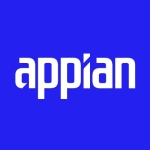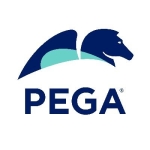What is our primary use case?
It's about mastering various domains. For example, an organization might want to master customer data residing within their IT landscape. This includes all master attributes related to customers, like name, email ID, phone number, address, and potential information like stores they visit. Ideally, if the organization also stores data related to those stores, all that information, files, and everything would be included. So, these master attributes would lie within the MDM system.
Here's where things get interesting. I'd bring this data from disparate sources. For example, accounting systems hold phone numbers, email addresses, and maybe even bank information (just an example).
But another system, like the ER system, might have different information, like the customer's spouse. So, I'd likely get streams from both these systems, but there might be an additional attribute in the ERP system, like the spouse's name.
Now, looking at all these different attributes lying in different systems, one system might have my name as "Raja S.," while another might have it as "Raja Soni." So, the question becomes: are Raja S. and Raja Soni the same person? How do you identify them from these records?
They try to match these records based on phone numbers or any other common attribute between the two systems. Then, I would have a complete record in MDM, which is called the "Golden Record" - the single version of truth within the system.
Furthermore, MDM can also contain additional attributes that the ERP or accounting systems didn't have. So, imagine ten different applications or data sources feeding customer information. I can gather all of that information and create a single version of the truth for a particular customer within the MDM system.
Additionally, if I want my customers to update any information, I can provide a form where they can enrich their data. For example, they could potentially enter their Social Security number (although this wouldn't be common practice). This is just an example of how someone might want to collect this information. So, I can create a form and say, "Okay, can you directly feed this into the MDM system?" This becomes an enrichment opportunity as well.
How has it helped my organization?
With Informatica MDM, before you consume the data, you need to check what kind of data it is. There could be some systems where the first name is missing, or the last name is listed as "missing."
This is where, before consuming or ingesting data into any MDM system, I can filter it out or rather do profiling using Informatica's data quality tool, which is a different tool called IDQ. I can profile the data, okay, and see the current state of the data from our system, any other database, or any source system.
This is where I'll identify issues like missing phone numbers, incorrect cities, and other things.
So, when I see that the data is incorrect or incomplete (not just incorrect, but also incomplete), I can go back to the source system based on these profiling reports. I would say, "Source XYZ, you have missing data. Can you please ensure that you send it?" So, when I ingest data into the MDM system, I will only ingest it with certain rules.
These rules define that only records with a first name, last name, city, phone number, and email address should get into MDM. If any of this is missing, I'm not going to let it get into the system.
I would ask the business to review those and then probably ask the system to correct them and then feed them again until the defined criteria are achieved. That's how I improve data quality using Informatica MDM.
Plus, I can also decide that once the data is in MDM, it can feed back to these source systems from where it was originally consuming the data. So, whatever is corrected gets looped back to these sources if they allow me to publish it to them.
Then, this automatically becomes a cycle: data comes in, gets a data quality check, then enters MDM, and then can be fed back to the source systems if they accept it.
What is most valuable?
First and foremost, data profiling is a very important aspect, because it allows me to understand the state of the data from the different source systems and applications I'm going to pull into MDM. This is crucial, as it helps me understand the existing data landscape.
Next, Informatica MDM allows you to perform fuzzy matching. Like the example of Raja S and Raja Soni mentioned above. With fuzzy matching, I can define a threshold, and the system will let me know whether these two records are the same or not.
This is where I think MDM shines - with its strong fuzzy matching algorithm. This is the essence of Informatica MDM. Based on these results, I can write our match conditions and then perform the corresponding data management activities.
When it comes to how data is governed - how accurate it is, what's missing, and what's not.
There are other Informatica tools involved: Informatica Enterprise Data Catalog (EDC) and Informatica Axon, which is specifically a governance tool. With these tools, users can understand data quality.
Data quality, Informatica EDC, and Axon work together - they "talk" to each other. The moment Axon identifies that data is bad, incomplete, incorrect, or whatever, the governance tool allows you to monitor all of these things and feed them back into the organization.
For example, if someone within the organization is using the governance tool, which is connected to data quality, they might realize: "This particular source isn't giving me certain information, like city data. But I need city information for my XYZ data usage. So, I should focus on another data source or application where customer cities are available." Based on this, data governance can be implemented, and workflows can be established.
MDM also provides workflows. When records come in or if a customer wants to update a record directly in MDM, different personas can be defined.
A workflow would then be triggered, and someone could review the data being fed through these forms or sources. They might reject or accept it based on predefined criteria. This is how data entering MDM is governed, ensuring everything is correct and meets organizational standards.
What needs improvement?
I feel the out-of-the-box APIs or the API management could be improved slightly from their current state. It could be more user-friendly.
In future releases, I would love to have more reports and dashboards available within Informatica MDM specifically for master data reporting.
Currently, there aren't many reporting functionalities offered. While it's true that reporting isn't a core feature of any MDM system, they do have basic dashboard reports. I'd like to see them made more customizable and offer more options for creating reports.
For how long have I used the solution?
I have been working with it for more than ten years.
What do I think about the stability of the solution?
Stability-wise, it's also pretty decent and stable. So, I would rate the stability an eight out of ten.
What do I think about the scalability of the solution?
I would rate the scalability an eight out of ten. It's pretty good because mastering data across various domains like suppliers is crucial. Informatica is probably the best when it comes to multi-domain solutions.
There are around 500 end users.
How are customer service and support?
The quality of resources is good, and the time is acceptable. However, the initial quality of resources assigned to support tickets could be better.
How would you rate customer service and support?
Which solution did I use previously and why did I switch?
I'd rate Informatica higher. The biggest reason is the multi-domain capability. Not all vendors offer that flexibility.
Additionally, Informatica is actively working on a clear, built-in AI engine for its tools. The SaaS version functions well, and they've introduced CLAIRE AI engine for on-premise versions. This engine learns from usage within your organization, further enhancing the experience.
How was the initial setup?
The complexity of the setup depends. For example, it is different for the on-premise version. Now, Informatica has mostly shifted towards a SaaS model, which is essentially plug-and-play. You just need to log in and start using it, making it very simple.
However, for the on-premise version, the setup process requires some expertise. It's not something just anyone can do. You need experts in place to handle the setup effectively.
What was our ROI?
Within the organization, businesses have benefited significantly. Tasks that used to take four to six weeks now only take three to four days.
What's my experience with pricing, setup cost, and licensing?
Pricing can vary because Informatica doesn't have a standard price across the board. It depends more on the sales representatives in different regions. They essentially call the shots and decide the discount percentage for each customer.
So, it's quite flexible, like a bargain, in a way, but it depends on the salesperson.
What other advice do I have?
Overall, I would rate the solution an eight out of ten.
I absolutely recommend it. If you're looking to implement a Master Data Management (MDM) solution, Informatica MDM is the most flexible tool available in the market. Compared to its competitors, it offers several advantages.
Firstly, it provides the option to move seamlessly between on-premise and SaaS versions. If you start with the on-premise version, you can easily transition to the SaaS model later, if needed.
Which deployment model are you using for this solution?
On-premises
Disclosure: My company does not have a business relationship with this vendor other than being a customer.





















